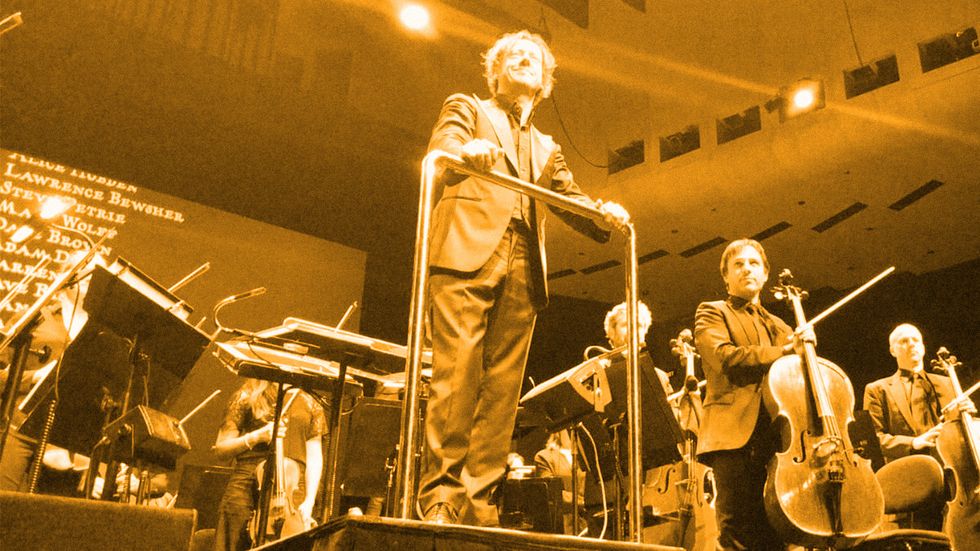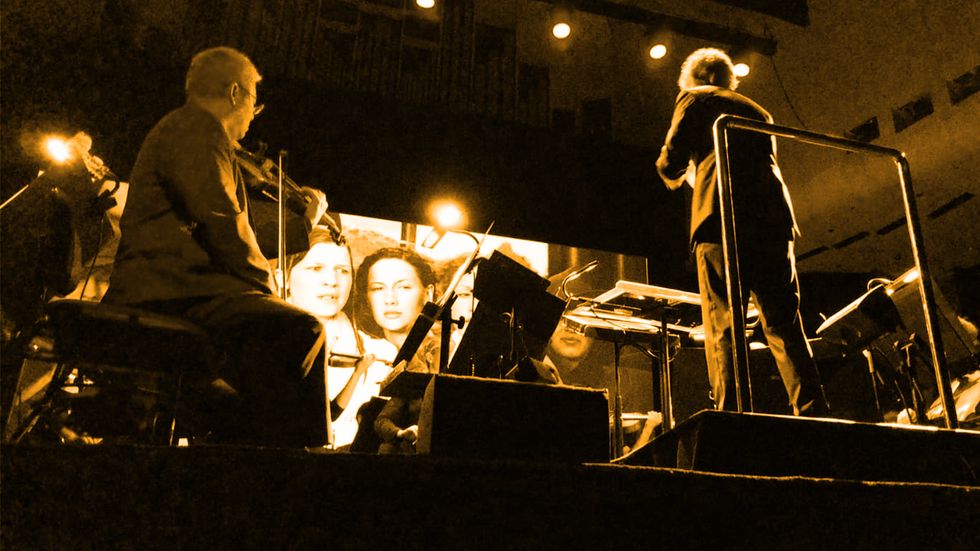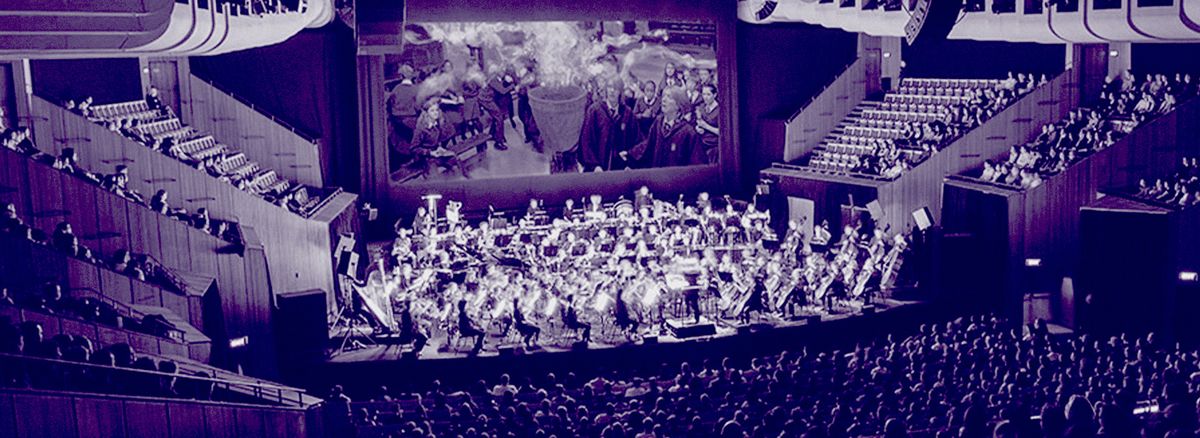The orchestra isn't what it used to be, and that's due, in part, to a new generation of music lovers who are drawn to the "film orchestra" phenomenon. What was once seen as a proud showcase for classical music has been adopted by a new, younger, niche audience who love cult film classics from Star Wars to Hitchcock to Harry Potter. It is changing the way people perceive the orchestra and the way they experience (and re-experience) its music.
Popular film franchises now have ongoing orchestral series. Most recently, Sydney has seen performances of Star Wars: The Empire Strikes Back at the International Convention Centre and Harry Potter and the Goblet of Fire, (the fourth instalment in the series) at the Opera House. The fifth, Harry Potter and the Order of the Phoenix, begins its four-night run at the Opera House this Wednesday, April 10.
Sydney Symphony Presents' former director Mark Sutcliffe described the response to the initiative as overwhelming. He said when the first Harry Potter film music performance, scored by five-time Oscar winner John Williams, was announced in 2016, the speed of sales revealed a clear demand for the format.
"Having only announced two performances at the Sydney Opera House, we quickly added additional shows and ended up performing six performances to approximately 12,000 happy audience members," Sutcliffe said in an email interview with Newsworthy.
The later Hogwarts instalments in the film orchestra series produced similar turnouts. For Harry Potter and the Goblet of Fire, hundreds turned up wearing red-and-yellow Hogwarts scarves, Gryffindor jumpers, and wands. There were merchandise stands outside the theatre and social media was abuzz with concert-related hashtags such as #HarryPotterOrchestra, #liveorchestra, and #GobletofFire.
You don't go to a Harry Potter in concert event to silently revel in the orchestral score. It's participatory.
Onstage in the Opera House concert hall, the players and their instruments surround the conductor's rostrum, obscuring, for some, the view of the all-important movie screen just behind the musicians. But Michelle Flores, 36, sitting in the front row, didn't mind at all. "Before, when I used to watch musicals or plays, I knew orchestras were there, but they were never in plain sight, usually they're under the stage," said Flores, a pianist and singer who grew up a Harry Potter fan.
"When you watch a movie, you tend to take the music for granted and you don't really notice it come in, but that's not the case [when you can see] the orchestra," she added.
While some may have wanted a bird's eye view of the performance, she wanted to sit close to the musicians and observe the way they played; to hear, up close, the violas, cellos, flutes, clarinets, bassoons, percussion, trumpets, harp and tuba (which she was seeing for the first time).

The conductor, Hamish McKeich, entered. "Can we get some cheers for each House? Who's from Gryffindor?" Cheers erupted for Harry Potter's own school house. "Slytherin?" The audience cheered again. "Ravenclaw?" The cheers got louder. "Hufflepuff?" They whistled and stomped their feet.
Flores gasped as the opening interlude began. McKeich's hand gestures were fluid, with a clear flow that seemed to mimic the lyrical music of Patrick Doyle's film score. You don't go to a Harry Potter in concert event to silently revel in the orchestral score. It's participatory. The audience laughed and cheered for their favourite characters. There was advice for Malfoy, "get a haircut!" Fans chuckled knowingly when Cho Chang, Harry's love interest, made awkward eye contact with the young wizard. When Rita Skeeter, the nosy journalist, forced Harry into a cupboard for an interview and told him he "should feel right at home", two boys shouted "savage!" and the audience giggled. An unspoken camaraderie and energy made the movie feel as fresh as the first time they had watched it, and the orchestra's power was central to that experience.
***
IN recent years, many orchestras around the world have embraced the medium. "It's taken a few years in terms of getting there," conductor McKeich said, of the global phenomenon. The Harry Potter and Star Wars franchises are popular, but there have also been performances of The Godfather, Pirates of the Caribbean, La La Land, and Interstellar.
John Williams composed the scores for the first three Harry Potter films, while Patrick Doyle wrote the score for Goblet of Fire. "Doyle used some of Williams' melodies in [Goblet of Fire] and the smooth, lyrical parts were put very well," McKeich said, adding that Williams' style is more rhythmic. What stood out about Doyle's style were the modern elements—especially his use of strings in creating suspense, given Goblet of Fire was the first Potter movie to introduce a suspenseful reprise of the opening music.
'There're goose bumps, it's interesting, emotional … It's an experience.'
McKeich explained that, in a normal orchestra performance, the conductor and musicians have more freedom, while the experience of conducting a film orchestra has more restrictions. One must pay close attention to visual cues called streamers, a coloured bar that signals the start of a new section in the music sheet.
"You're paying attention to different colours and cues and frame changes. There's more pressure," he says.
While some traditional devotees of orchestral music may see the film orchestra trend as a way of dumbing down classical traditions, the advantage of film orchestras is that they tap into specific fanbases that are loyal to a series—ensuring profits and generating big turnouts for the Sydney Symphony Orchestra.

The Sydney Symphony Orchestra, founded in 1908, receives some government funding but relies heavily on its own box office take. The $21.5 million receipts in 2017 were almost double that of a decade ago and the introduction of film orchestra played its part in that success.
"They [SSO] chose the perfect movies if they wanted to reach out to the younger audiences. It really bridged the gap," Flores said. "Especially since there's a perception that the opera, musical, or orchestra is only for older people."
For Sutcliffe, who was with the SSO from 2015-18, the performances revealed the importance of the music to a film. "When there is an 85-piece orchestra on stage, you get to realise how much goes into making the music that makes these films so memorable. The sound is more robust and offers a fresh dynamic to the film experience."
"There're goose bumps, it's interesting, emotional … it's a lot of emotions that tell the story a bit more. It's an experience," said McKeich.
Flores may be a fan but questions its longevity. "Right now, it's something new so people would definitely flock to the Opera House to see it but after a while ... Can they keep doing this for, say, 30 more years without people getting tired of it? For people who are not really that into music, they might not."
The SSO clearly thinks Harry has a way to go. This week's four-night run is all but sold out and in July, it premieres the next instalment, Harry Potter and the Half Blood Prince in Concert.
Harry Potter and the Order of the Phoenix™ in Concertwww.youtube.com






Afraid of an egg: the tyranny of living with social media's body standards